For Colored Girls Blu-ray Movie
HomeFor Colored Girls Blu-ray Movie 
Blu-ray + DVD + Digital CopyLionsgate Films | 2010 | 133 min | Rated R | Feb 08, 2011
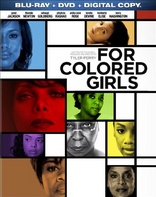
Movie rating
5.1 | / 10 |
Blu-ray rating
| Users | 4.0 | |
| Reviewer | 4.0 | |
| Overall | 4.0 |
Overview
For Colored Girls (2010)
Ntozake Shange's Obie Award-winning play brought to the screen, a poetic exploration of what is to be of color and a female in this world.
Starring: Kimberly Elise, Janet Jackson, Loretta Devine, Thandiwe Newton, Anika Noni RoseDirector: Tyler Perry
| Drama | 100% |
Specifications
Video
Video codec: MPEG-4 AVC
Video resolution: 1080p
Aspect ratio: 1.78:1
Original aspect ratio: 1.85:1
Audio
English: DTS-HD Master Audio 7.1
Subtitles
English, English SDH, Spanish
Discs
50GB Blu-ray Disc
Two-disc set (1 BD, 1 DVD)
Digital copy (as download)
DVD copy
Packaging
Slipcover in original pressing
Playback
Region A (locked)
Review
Rating summary
| Movie | 3.5 | |
| Video | 4.5 | |
| Audio | 4.5 | |
| Extras | 2.5 | |
| Overall | 4.0 |
For Colored Girls Blu-ray Movie Review
Hey. . .where's Madea?
Reviewed by Jeffrey Kauffman February 15, 2011The old adage goes that if you put enough monkeys in a room with enough typewriters (and/or computers), they’ll ultimately get around to writing the Encyclopedia Brittanica. I’m not sure if the adage is transferable in the way this review intends, but the fact is an analogous situation springs to mind with regard to Tyler Perry and his filmed adaptation of Ntozake Shange’s acclaimed “choreopoem” For Colored Girls Who Have Considered Suicide When the Rainbow is Enuf (shortened for film purposes—audiences have limited attention spans, evidently—to For Colored Girls). In this case, no offense intended, Mr. Perry would be those selfsame monkeys and the film would be something akin to his magnum opus. Perry churns out movies like some people produce their daily waste products, and truth be told, most of Perry’s films might indeed fall into that “crap” category. I’ve long argued that Perry is without doubt incredibly talented, but that he needs to step away from his omnipotent persona when it comes to his films. He almost always writes, directs and co-stars in his movies, and there’s evidently simply no one around to tell him enough (and/or enuf) is enough. Whether it is due to Perry adapting a previous work which he himself did not write, or the influx of some new members into Perry’s usual repertory acting squad, it can’t be denied that For Colored Girls finally manages to help Perry break free—albeit tenuously at times—from the self-imposed constraints which have made so many of his films the brunt of so much critical backlash. Though some may consider this a backhanded compliment, For Colored Girls is easily Perry’s most accomplished film and actually manages to tread surprisingly well the oftentimes maddening combination of melodrama and humor with which Perry usually infuses his work.
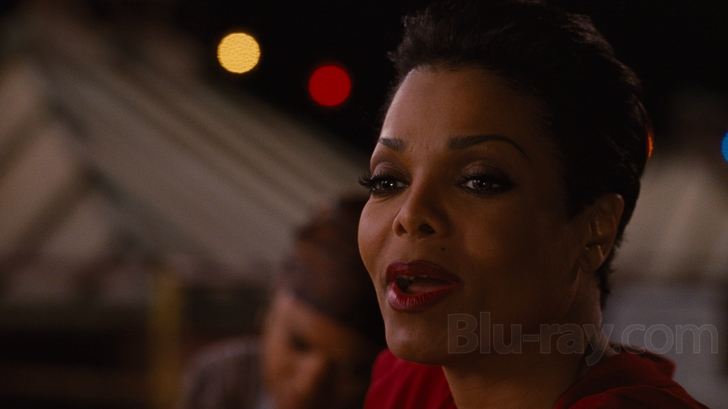
The 1970’s were a heady time for African Americans in all sorts of arts genres. Trailblazers like Sidney Poitier, playwright Lorraine Hansberry and novelist Richard Wright had proven that with enough fortitude and perseverance the American Dream, long denied those of a darker hue, could indeed be realized. Now in the wake of those initial successes came an influx of new talent, some mainstream, some relatively radicalized. A score of important new black actors gained prominence in the 1970’s, people like Cicely Tyson and Richard Roundtree, and in other pursuits, there was an exciting vibration of anything being possible. Two of the biggest Broadway musicals of the 1970’s were black composer-lyricist Charlie Smalls’ The Wiz, which recreated L. Frank Baum’s The Wizard of Oz through the eyes and ears of the African American experience. And Hansberry’s iconic play Raisin in the Sun was itself musicalized as Raisin, becoming one of the biggest hits of the decade. On a somewhat smaller, perhaps more innovative, scale was Ntozake Shange’s self-described “choreopoem,” For Colored Girls Who Have Considered Suicide When the Rainbow is Enuf. A spoken cycle of 20 poems, the piece explored aspects of being an African American woman in modern America. The play first saw the light of day in California, but soon moved to Off Broadway (where it won the Obie Award) before eventually migrating to the Great White Way itself.
Perry might seem to be the last person to attempt to adapt Shange’s perhaps untranslatable work to the screen, and in fact he certainly wasn’t the first, as black writer-director Nzingha Stewart was announced as having acquired the rights to Shange’s piece and would be bringing it to the screen. In typical Hollywood (and/or Atlanta, considering Perry’s preferred location) fashion, when Perry was approached to help craft the screenplay, he ended up taking over the entire project. No one aside from Perry seemed to be very pleased about this development, least of all Shange, who derided Perry’s “plastic” treatment of women in his films. Shange of course comes from a more radicalized feminist background and the antics of Madea are probably not her idea of high culture.
There are both positives and negatives to Perry’s adaptation of For Colored Girls, but on balance, against all odds, it’s my considered opinion the positives outweigh the negatives, if only slightly. First of all, Shange’s piece was a series of monologues built around the conceit of utilizing different colors (hence the title, which is a play on words). Perry manages to incorporate several of these monologues whole cloth, without any over obvious shoehorning. What Perry has done to unite the monologues and bring an overall dramatic structure to the piece is to place most of the women in a New York City apartment house. The major characters who don’t live in the apartment house (like Janet Jackson’s publishing executive) interact with residents of the apartment house in some way, shape or form. This is obviously not Shange’s original conception, and Perry can certainly be faulted for going this route, but he handles the adaptation surprisingly spryly, especially considering his penchant for treacle and melodrama.
This is in many ways Perry’s most accomplished piece of directorial craft, as he segues from character to character and storyline to storyline with at least a competent grace, reminiscent of other films like Slacker or Magnolia that use a multi-character “wandering” technique. We might start out with a character like Whoopi Goldberg’s religiously obsessed fanatic, who then bumps into a young dance instructor (Anika Noni Rose), and we are then off with that character for a little while. The structure is always clear, and the characters are well drawn and distinctive, all to Perry’s credit.
Where the film gets into trouble, as with so many Perry opuses, is on its over reliance on outright melodrama. It can’t be denied that Shange’s original source material included references to everything from rape to abortion to abuse, but there’s a difference between hearing these things talked about and seeing them portrayed on screen, especially when one horrible thing after another starts piling up on these characters after they’ve been introduced. And in an even more serious misstep, Perry once again wants to have insta-salvation cure everyone in the final few minutes of the film, which after the maelstrom of bad fortune which we’ve witnessed with regard to several characters seems downright insensitive.
Perry nonetheless displays an encouraging new maturity with this piece. He has a new grasp of the film medium and the possibilities of montage and editing which most of his previous pieces don’t even begin to display. The movie looks and sounds marvelous, with little of the lo-fi ambience that mars so many of his cookie cutter projects. The performances here are especially noteworthy, with extremely fine work from Kimberly Elise as an abused wife and mother. But the entire large ensemble cast is really quite excellent, with a range of approaches and techniques that nonetheless melds into a stylistic whole.
Perry has taken his first, perhaps fumbling, steps away from doing everything himself. At least he adapted something not of his own making this time around, and it was something which was a difficult adaptation to begin with. If he didn’t succeed outright, it’s still bracing to see him finally breaking free of his self-imposed restrictions, albeit fitfully at times. If For Colored Girls isn’t an outright triumph, it hopefully points the way to Perry becoming a truly accomplished filmmaker.
For Colored Girls Blu-ray Movie, Video Quality 
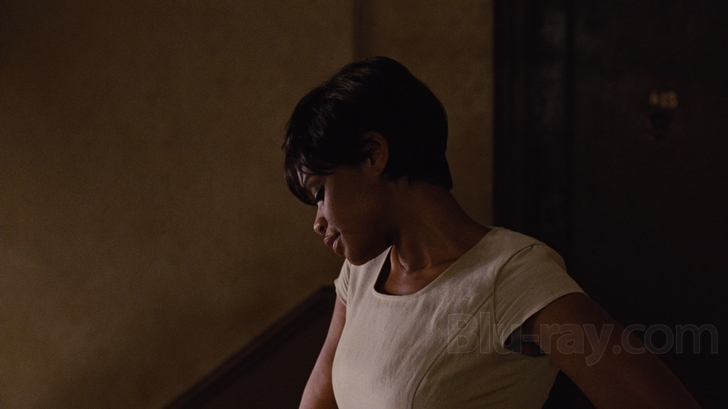
For Colored Girls erupts onto Blu-ray with an often gorgeous AVC encoded 1080p transfer in 1.78:1. As mentioned above, the "colored" part of the title is a play on words, as each of the characters works within her own color scheme, and that wonderfully varied palette is fully on display throughout this film, with nicely saturated colors in sometimes amazingly shaded hues. This is one of the best lit and photographed films in Perry's increasingly huge oeuvre, and from the first moments of a dappled sunlit practice room, the results are there on the screen. Fine detail is exceptional throughout the film, and the overall image is very sharp, clear and well detailed. But, as perhaps is fitting, it's the colors that really make this film such a delight to watch. The drama may be turgid at times, but the image quality is top notch.
For Colored Girls Blu-ray Movie, Audio Quality 
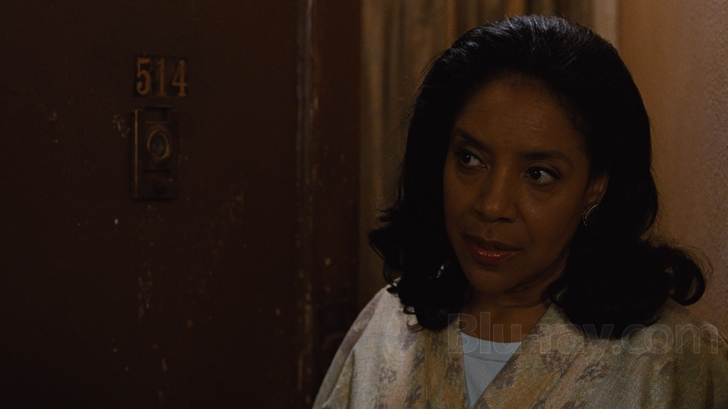
For Colored Girls, as most of Perry's films, is extremely musical, and that omnipresent music is brilliantly presented on the Blu-ray's lossless DTS-HD Master Audio 7.1 mix. Immersion may not be overwhelming, but channel utilization is very smartly applied here, with relatively siimple effects like a solo instrument placed in a side channel, to good directionality in the dialogue sequences. Fidelity is excellent, with nicely robust highs and lows. This track doesn't offer the startling LFE of Madea bursting out with a shot or two, but there's a nicely full low end here in several sequences, and overall the track sounds rich and lifelike.
For Colored Girls Blu-ray Movie, Special Features and Extras 
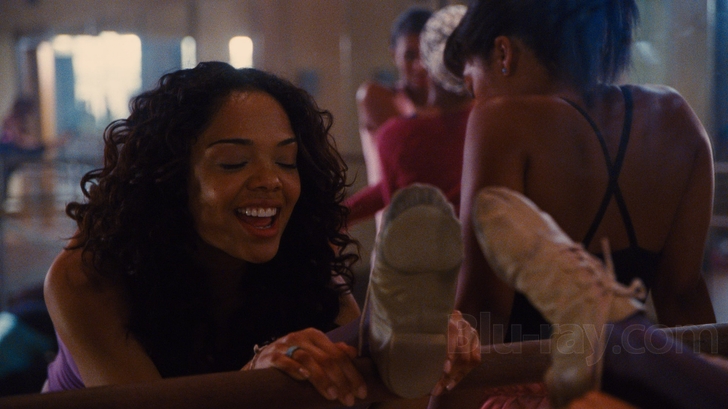
For Colored Girls has a nice mini-rainbow of supplements:
- Span of the Rainbow (HD; 38:21) is a really interesting, interactive set of featurettes and text screens that allow you to navigate through background information on the project.
- Prism of Poems offers the original verse segments from Shange's choreopoem which made it to the film, as well as another recitation from the book version.
- Transformation: Movie Magic (HD; 14:54) discusses how the choreopoem was adapted for film.
- Music For Colored Girls contains three excerpts from within the film itself which feature music.
- Marketing Archive includes trailer, portraits and art gallery.
For Colored Girls Blu-ray Movie, Overall Score and Recommendation 
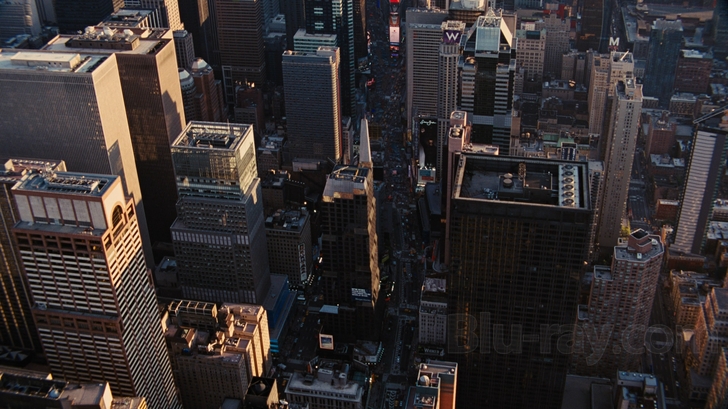
Color me surprised. I haven't been exactly shy in proclaiming how weary I've become of Perry's rote formulas. If you give him no other props, it can't be denied that For Colored Girls was a huge risk on his part. It doesn't always succeed, and in fact it falls into some of the same melodramatic traps that previous Perry pieces have suffered from. But this film shows a rather impressive growth on the part of the writer-director. Shange's original source material may well be unadaptable, but Perry has done a respectable job here, and he elicits uniformly fine performances from his large cast. This Blu-ray looks and sounds great and comes Recommended.
Similar titles
Similar titles you might also like

Boys on the Side
1995

I Can Do Bad All by Myself
2009

Why Did I Get Married Too?
2010

The Casual Vacancy
2015

9 to 5
Nine to Five | Limited Edition to 3000 - SOLD OUT
1980

Harum Scarum
Warner Archive Collection
1965

Girls: The Complete First Season
2012

Why Did I Get Married?
2007

Fried Green Tomatoes
1991

Elizabethtown
Paramount Presents #14
2005

Noel
2004

The Second Best Exotic Marigold Hotel
2015

Away We Go
2009

Friends with Money
2006

Urban Cowboy
40th Anniversary Edition
1980

Waitress
2007

Center Stage
Choice Collection
2000

Afternoon Delight
2013

Enough
2002

Michael
Warner Archive Collection
1996
